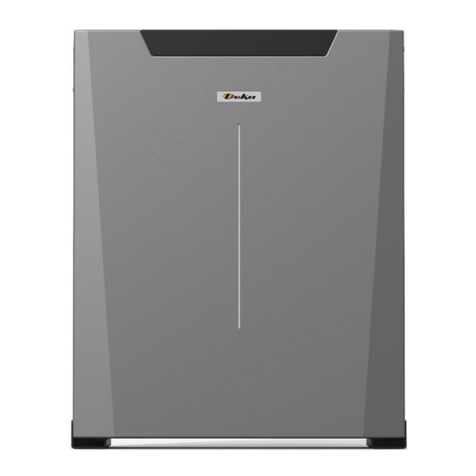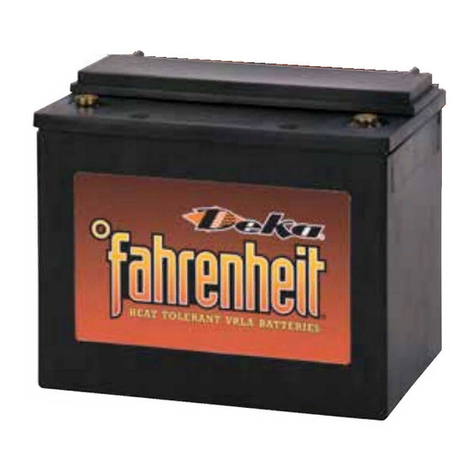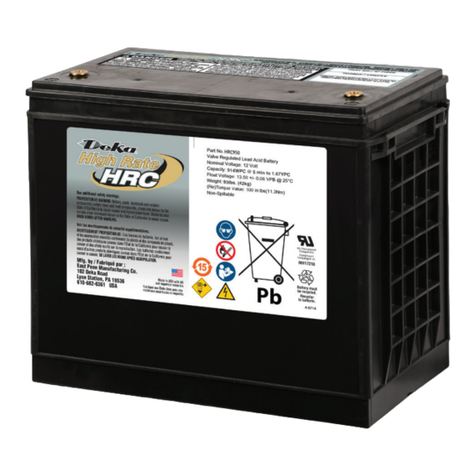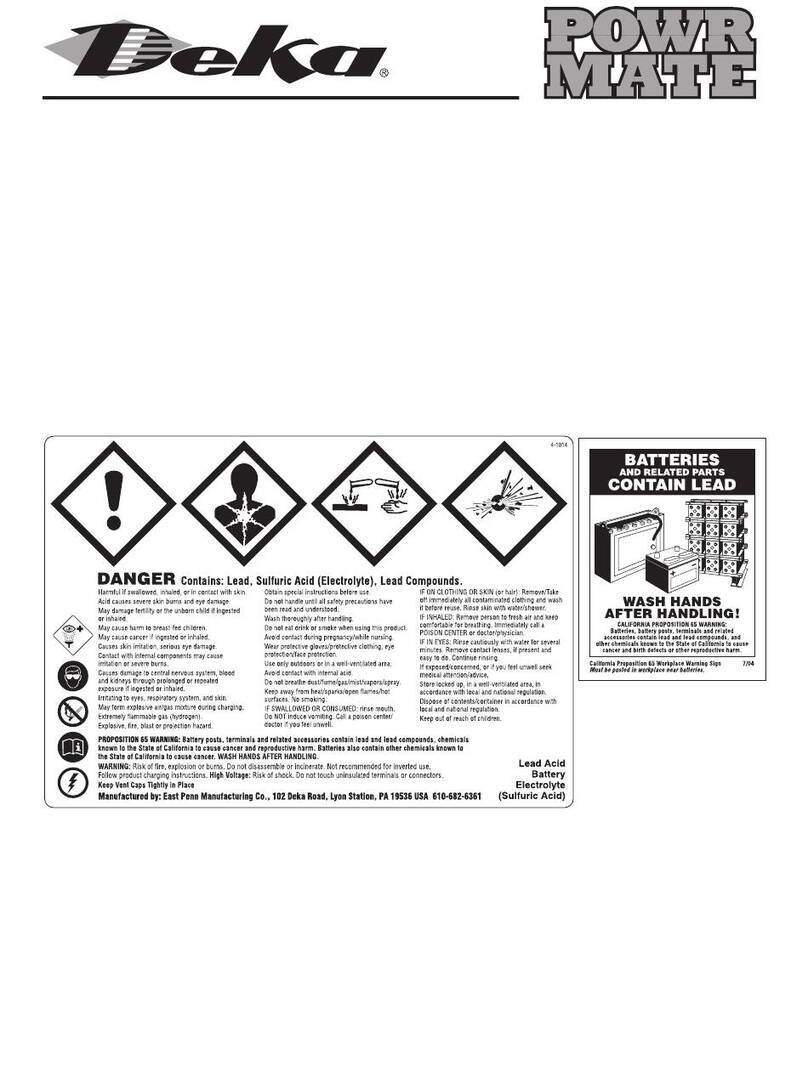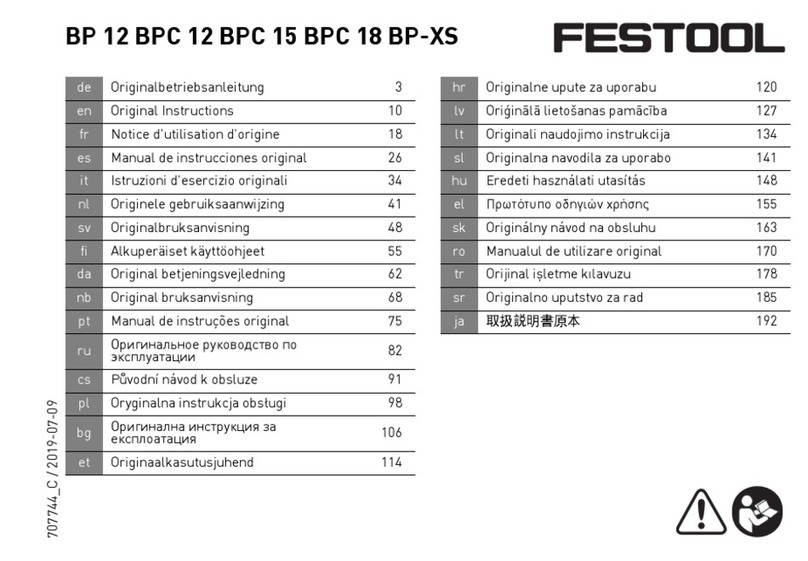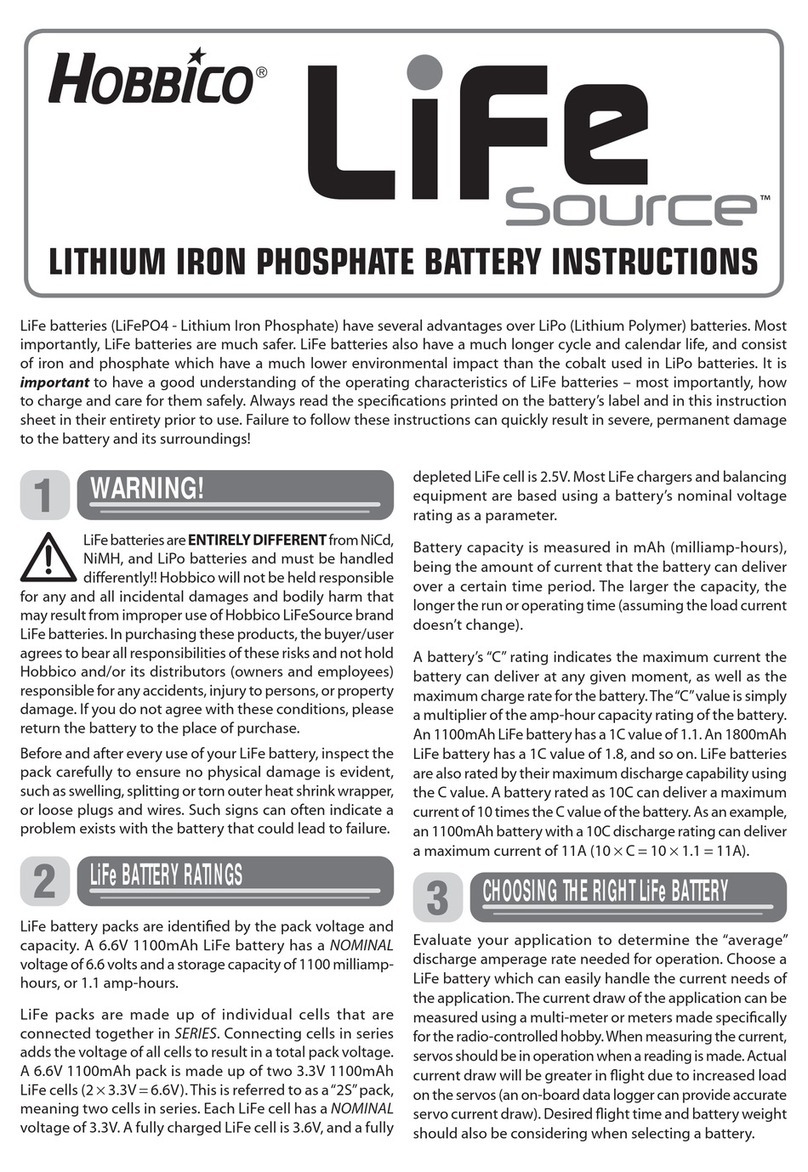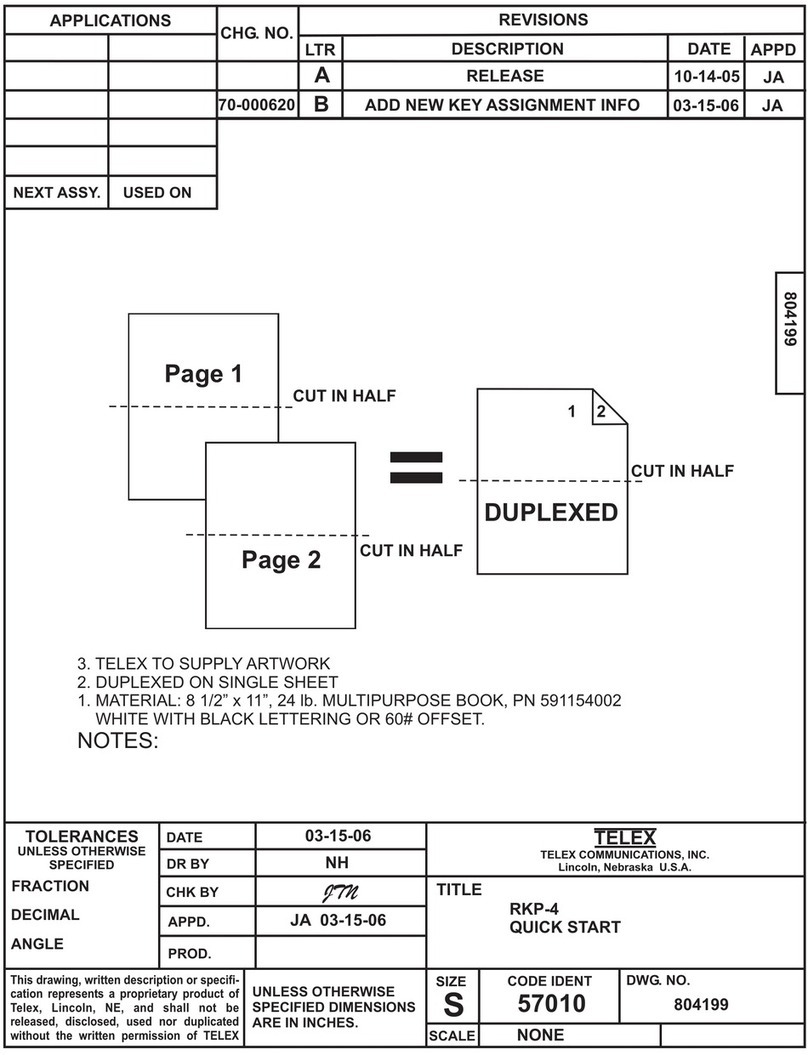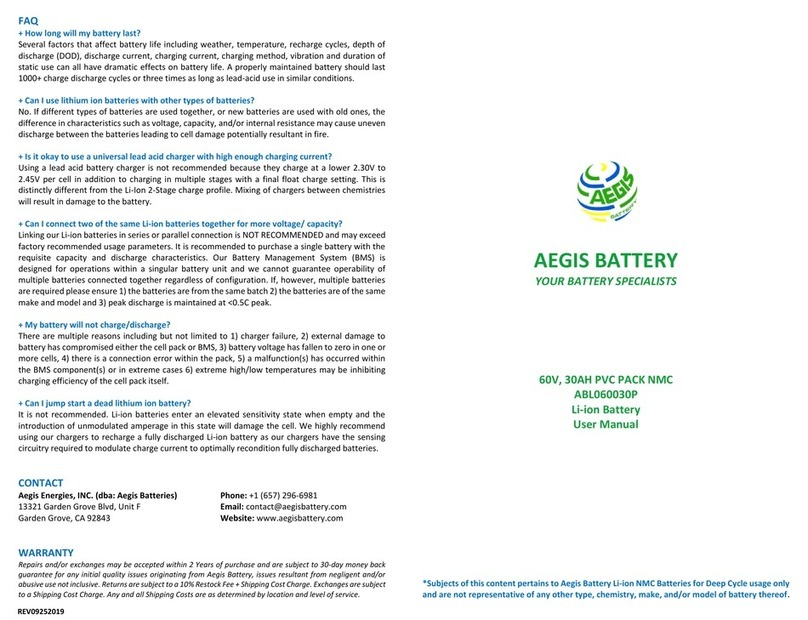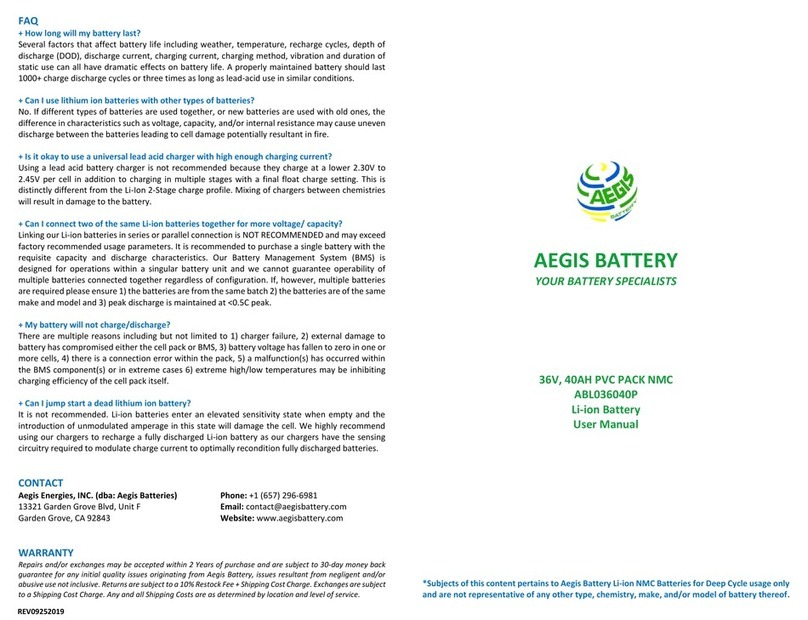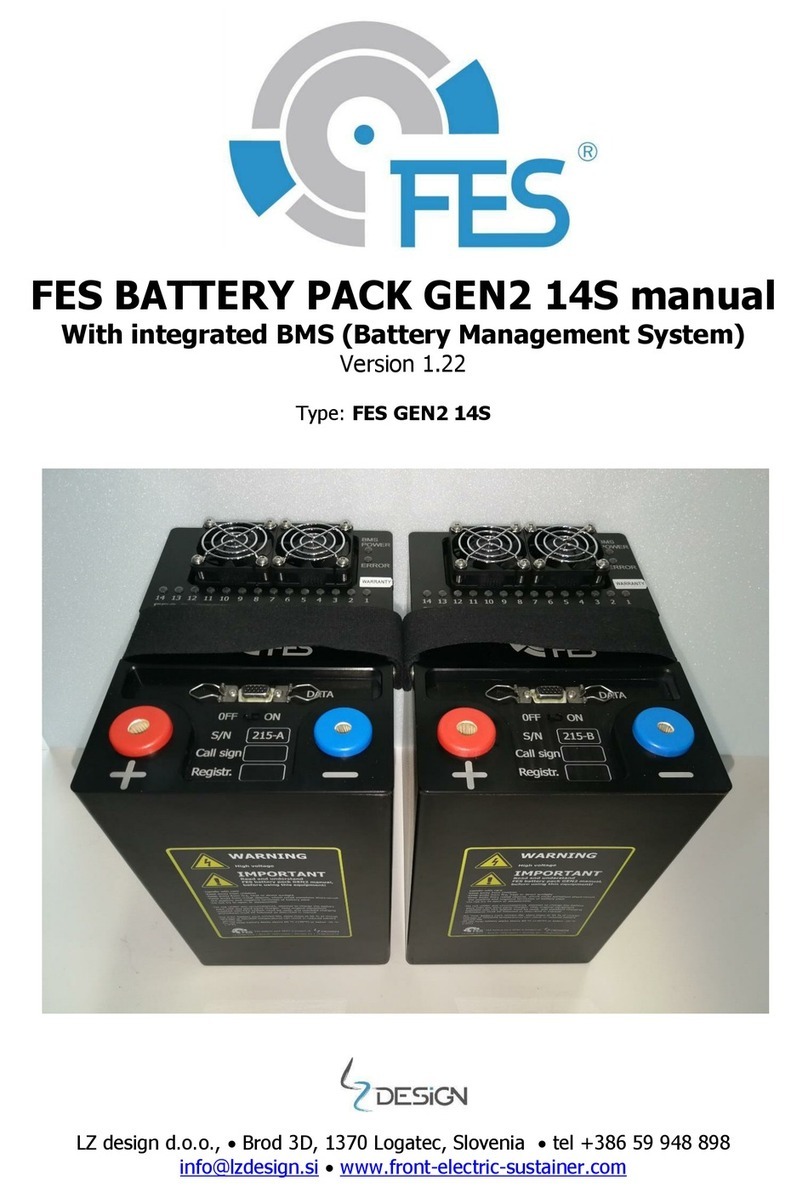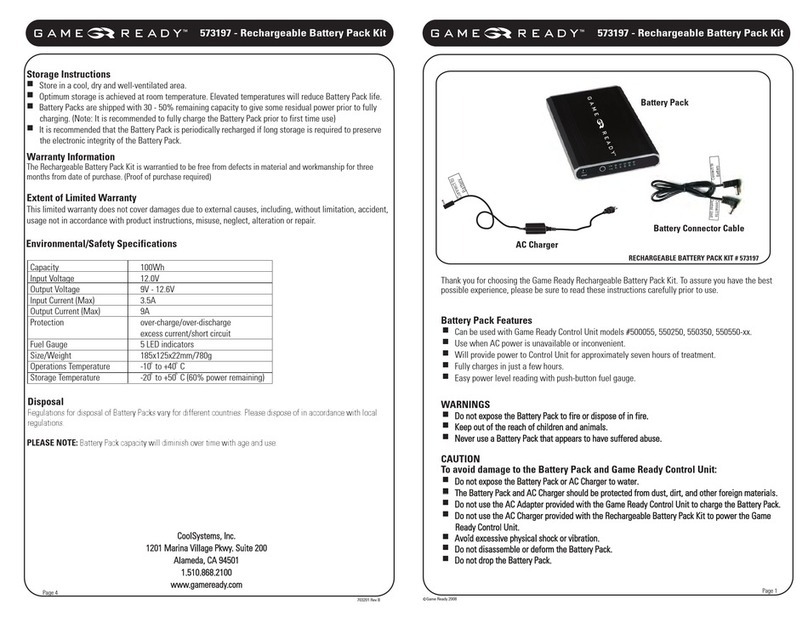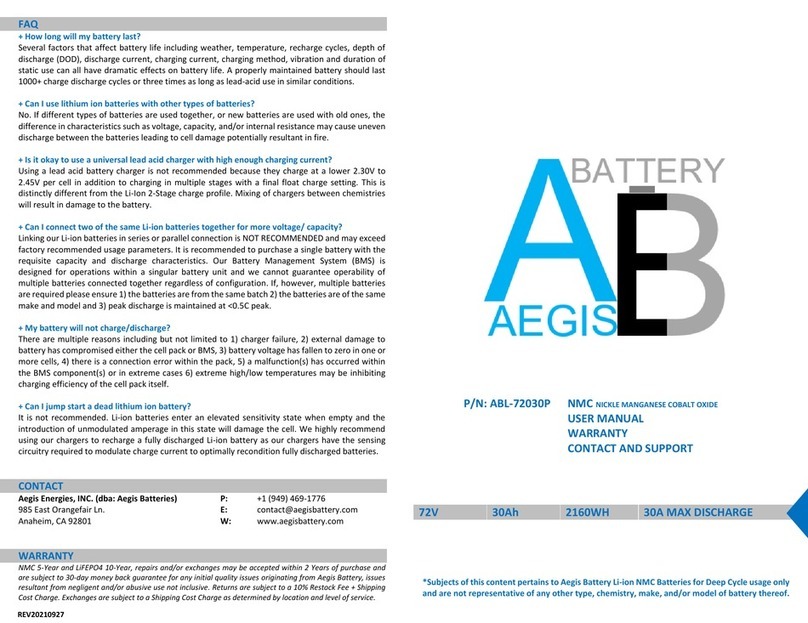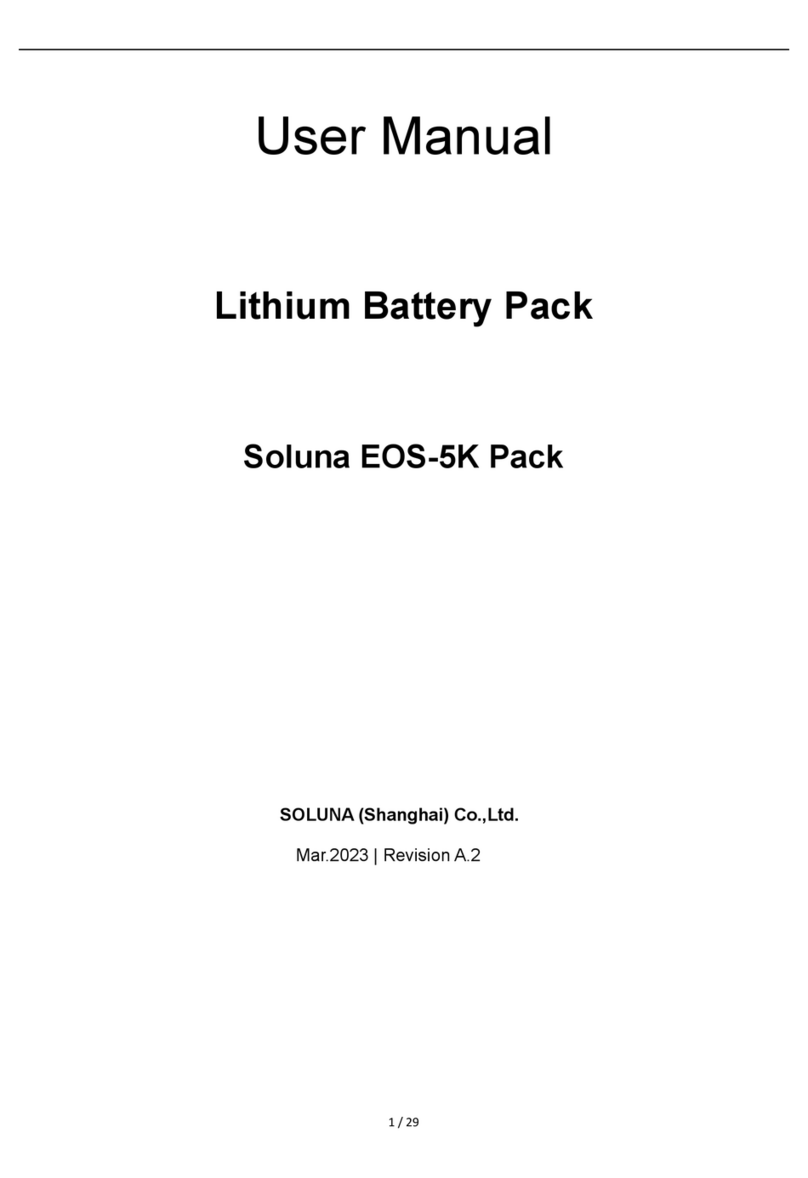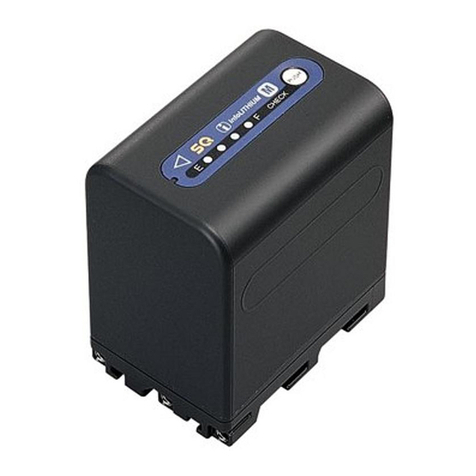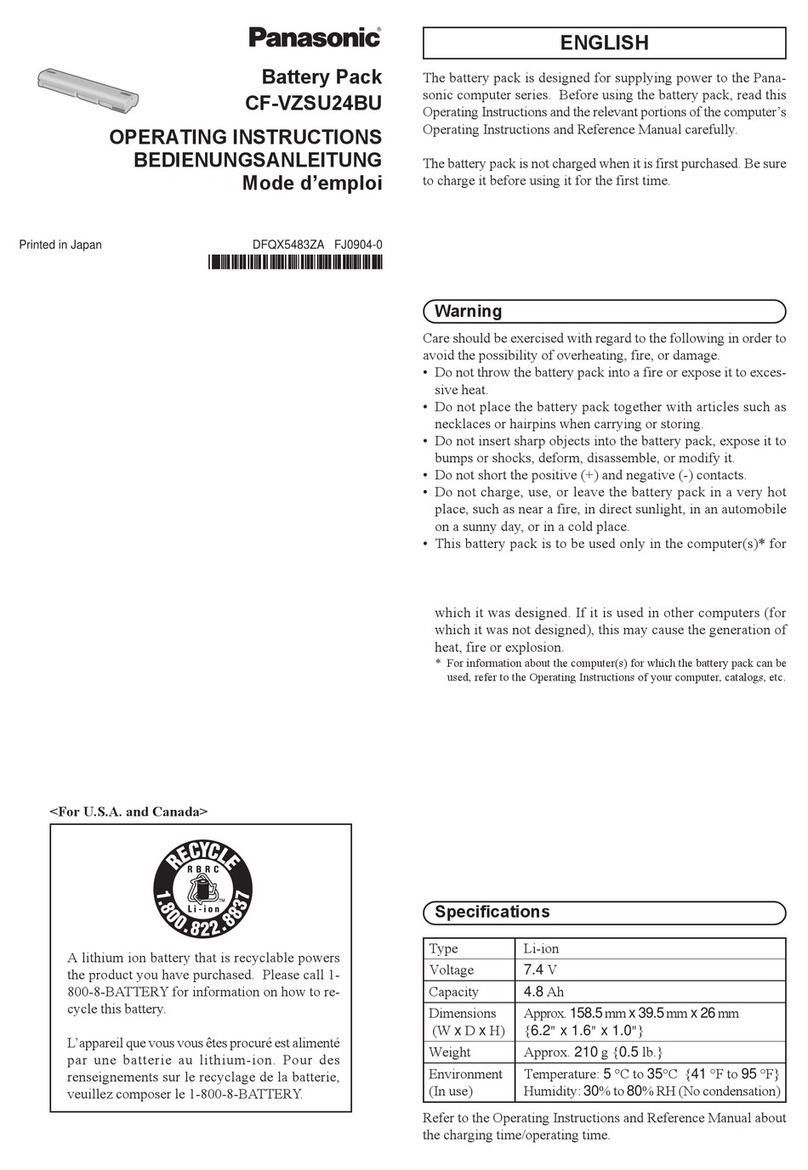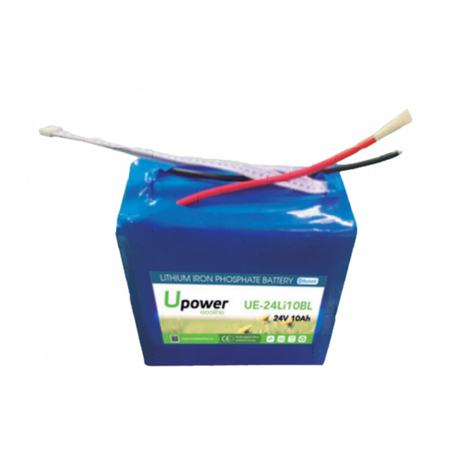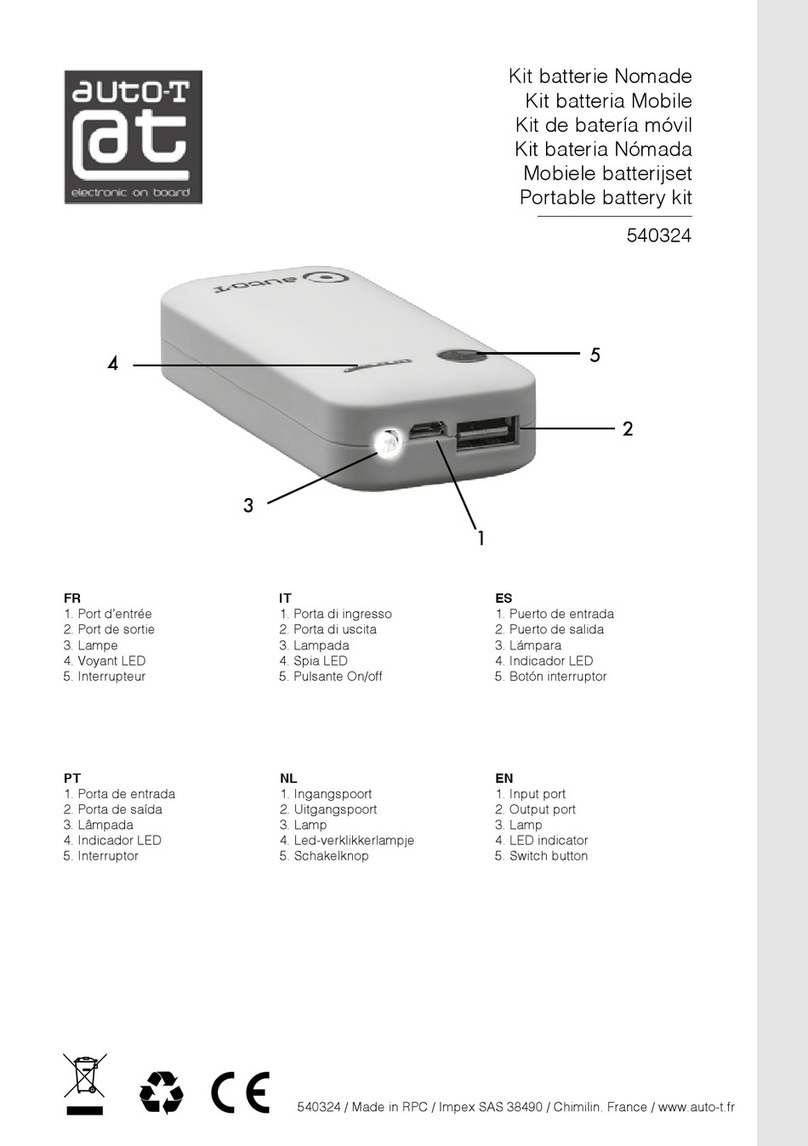Deka AVR45 Series User manual

AVR45 SERIES –RAILWAY APPLICATION
INSTALLATION AND OPERATION MANUAL
Califo nia
P oposition 65
Wa ning:
Batteries, battery posts, terminals and related accessories
contain lead and lead compounds, and other chemicals known
to the state of California to cause cancer and birth defects or
other reproductive harm. Wash hands after handling.

Safety Pre autions
Protective Equipment ......................................3
Procedures ......................................................3
Re eiving & Storage
Receiving Inspection........................................3
Unp cking ........................................................3
Stor ge ............................................................3
Installation
Gener l ............................................................3
Grounding ........................................................4
R cks ..............................................................4
Electric Code for M inten nce Access ............4
H rdw re Torque Requirements......................4
System Installation
Cell Inst ll tion ..............................................5
Ele tri al Conne tion
Connector Assembly......................................5
Final Assembly Che k Pro edure ................6
TABLE OF CONTENTS
System Installations
Ch rge Volt ge ..............................................6
Ch rge Current ..............................................6
Temper ture Compens tion ..........................6
Cell Volt ge....................................................6
Equ lize ........................................................6
B ttery Oper tion ..........................................6
Rectifier Ripple Volt ge ................................7
Re ord Keeping................................................7
Maintenan e
Annu l Inspection ............................................7
B ttery Cle ning ..............................................7
C p city Testing ..............................................7
APPENDIX A – Unigy II AVR45 Series B ttery
Weight & Acid Volumes....................................8
APPENDIX B – Volt ge Compens tion Ch rt
Ch rge Current Limits......................................9
APPENDIX C – System L yout Dr wings ......10
Battery Maintenan e Report ........................12
Fig. 1-1
2
IN REFERENCE TO THIS MANUAL:
- “Cell” is defined as an individual 2-volt unit.
- “Battery string” is defined as a series connected
electrical system comprised of cells (individual 2-volt units).

SAFETY PRECAUTIONS
Although all valve-regulated cells have the electrolyte immobilized
within the cell, the electrical hazard associated with batteries still
exists. Wor performed on these batteries should be done with
the tools and the protective equipment listed below. Valve-
Regulated cell installations should be supervised by personnel
familiar with batteries and battery safety precautions.
WARNING: Ris of fire, explosion or burns. Do not disassemble,
heat above 40°C, or incinerate.
Prote tive Equipment
Although VRLA cells can vent or leak small amounts of electrolyte,
electrical safety is the principle but not the only concern for safe
handling. Per IEEE 1188 recommendations, the following minimum
set of equipment for safe handling of the cells and protection of
personnel shall be available:
1. Safety glasses with side shields, or goggles, or face shields
as appropriate. (Consult application specific requirements)
2. Electrically insulated gloves, appropriate for the installation.
3. Protective aprons and safety shoes.
4. Portable or stationary water facilities in the battery vicinity for
rinsing eyes and skin in case of contact with acid electrolyte.
5. Class C fire extinguisher.
6. Acid neutralizing agent.
7. Adequately insulated tools (as defined by ASTM F1505 “Standard
Specification for Insulated and Insulating and Tools)
8. Lifting devices of adequate capacity, when required.
Procedures
The following safety procedures should be followed during
installation:
(Always wear safety glasses or face shield when working on or
near batteries.)
1. These cells are sealed and contain no free electrolyte. Under
normal operating conditions, they do not present any acid dan-
ger. owever, if the cell jar or cover is damaged, acid could be
present. Sulfuric acid is harmful to the s in and eyes. Flush
affected area with water immediately and consult a physician if
splashed in the eyes. Consult SDS for additional precautions
and first aid measures.SDS sheets can be obtained at
www.eastpennmanufacturing.com
2. Prohibit smo ing and open flames, and avoid arcing in the
immediate vicinity of the battery.
3. Do not wear metallic objects, such as jewelry, while working on
batteries. Do not store un-insulated tools in pockets or tool belt
while working in vicinity of battery.
4. Keep the top of the battery dry and clear of all tools and other
foreign objects.
5. Provide adequate ventilation (per IEEE standard 1187 and/or
local codes) and follow recommended charging voltages.
6. Never remove or tamper with the pressure relief valves.
Warranty void if vent valve is removed.
7.
Inspect all flooring and lifting equipment for functional adequacy.
8.
Adequately secure battery modules, racks, or cabinets to the floor.
9. Connect support structures to ground system in accordance
with applicable codes.
Procedures continued
10. The IEEE Standards contain additional information.
Other standards may be relevant to your specific application.
IEEE 1184 – Guide for Batteries for UPS Systems
IEEE1187 – Recommended Practice for Installation Design of VRLA Batteries.
IEEE 1188 – Recommended Practice for Maintenance, Testing, of VRLA Batteries.
IEEE 1189 – Selection of VRLA Batteries for Stationary Applications
RECEIVING & STORAGE
Receiving Inspection
Upon receipt, and at the time of actual unloading, each package should
be visually inspected for any possible damage or elec-trolyte leakage.
If either is evident, a more detailed inspection of the entire shipment
should be conducted and noted on the bill of lading. Record receipt
date, inspection data, and notify the carrier of any damage.
Unp cking
1. Always wear eye protection.
2. Check all batteries for visible defects such as cracked containers,
loose terminal posts, or other unrepairable problems. Batteries
with these defects must be replaced.
3. Check the contents of the package against the packaging list.
Report any missing parts or shipping damage to your East Penn
agent or East Penn Mfg. Co. immediately.
4. Never lift the batteries by the terminal posts.
5. When lifting batteries, the proper equipment is needed such as a
forklift or a portable crane. Always check the lifting capacities of
the equipment being used and never lift more than one cell at a
time by the handles in the metal sleeve.
Stor ge
1. Cells should be stored indoors in a clean, level, dry, cool location.
Recommended storage temperature is 0°F to 90°F (–18°C to 32°C).
2. Stored lead cells self discharge and must be given a boost
charge to prevent permanent performance degradation.
0°F to 77°F (-18°C to 25°C) storage:
Batteries should be recharged six months from date of manufacture.
>77°F (25°C) storage:
Use the chart below for recharge intervals. Voltage readings
should be taken on a monthly basis. Cells that reach 2.10V per
cell or less should be recharged regardless of scheduled interval.
Record dates and conditions for all charges during storage.
3. If a boost charge is required; the recommended charge is 24
hours at a constant voltage equal to 2.40V per cell.
4. Do not store beyond 12 months.
INSTALLATION
Gener l
Caution should be taken when installing batteries to ensure no damage
occurs. The battery string cabinet, tray, rack, etc. shall be inspected for
sharp edges that could cause damage to the battery casing. Batteries
shall not be dropped, slid, or placed on rough or uneven surfaces such
as tray lips or grated flooring. Mishandling of batteries could result in
equipment damage or human injury. East Penn will not be liable for
damage or injury as a result of mishandling or misuse of the product.
3

Grounding
When grounding the battery string, proper techniques should
be applied per electrical standards, such as NEC and/or local
codes as well as User Manual of specific application.
Note: Battery system grounding and/or individual module
grounding, if required, is the installer’s responsibility.
Ra ks
Assemble racks in accordance with intended arrangement, align
with a level and bolt to floor. Consult applicable rack assembly
instructions for specifics.
Electric Code for M inten nce Access
Refer to ANSI/NFPA-70 National Electric Code for access and
working space requirements around the battery. A minimum of
36" aisle space is required in front of the battery system for
service and inspection.
H rdw re Torque/Retorque Requirements
4
Recharge Interval Chart

SYSTEM INSTALLATION
Cell Inst ll tion
Assemble system per the following details.
CAUTION: Never lift more than one cell at a time.
1. Ensure sufficient space has been allowed for proper and safe
battery installation and maintenance.
2. If cells are to be installed on a rack or cabinet, follow rack/
cabinet manufactures instructions for correct installation.
3. Batteries may be installed with posts in a vertical or horizontal
position. When installing in horizontal or vertical position,
ensure battery post are provided with ample clearance from
metal parts of rack/cabinet.
ELECTRICAL CONNECTION
Connector / C ble Assembly
1. The contact surfaces of each individual post on every cell has
been cleaned and coated with a thin film of NO-OX-ID “A” grease
at the factory. Ensure the contact surfaces are free of dust or dirt
prior to assembly. Re-application of NO-OX-ID “A” grease may
be required if post cleaning is required.
2. Connectors/cable lugs supplied with cells. It is recommended all
connectors/cables be coated with a thin film of NO-OX-ID “A”
grease.
3. Install the cables loosely to allow for final alignment. Spacing
between cells should be a minimum of 0.50” (12.7mm) for even
airflow around cells.
4. For multipost batteries (17 to 33 plate) a connector is to be
installed at the battery system positive and negative end of
each multiple cell configuration. This connector is used to
electrically tie all same polarity posts together.
5. Charging / load cable(s) should be tin or lead plated copper
lugs able to accept a 1/4 –20 bolt. Cable lugs should be coated
with a thin film of NO-OX-ID “A” grease. System connecting
cables can be attached to any battery post of the multipost
connector. System connecting cable(s) supplied by others.
Select cable size based on current carrying capability and
voltage drop.
6. Reference Appendix C for layout drawings detailing cable and
connector quantity and placement.
7. Upon completion of installing, all connectors / cables hardware
should be torqued to 125 ± 5 inch pounds (14.1 ± .5 Nm).
5

Fina Assemb y Check Procedure
1. For future identification of all cells, number individual cells in
sequence, beginning with number one (1) at the positive end
of the battery. The last cell of the battery string is located at
the negative output terminal.
2. Read and record the voltages of the cells to assure that they are
connected properly. The total battery string voltage should be
approximately equal to the number of cells connected in series
multiplied by the measured voltage of one cell. If the measure-
ment is less, recheck the connections for proper polarity. Verify
that all cell and battery string connections have been properly
torqued.
3. Measure and record the intercell connection resistance using a
micro-ohms meter. This helps determine the adequacy of initial
connection installation and can be used as a reference for future
maintenance requirements. Refer to the recording forms in
Battery Maintenance Report of this manual. Review the records
of each connection and detail resistance measurements. Clean,
remake, and re-measure any connection that has a resistance
measurement greater than 10% of the average of all the same
type connections (i.e. intercell, intermodule, etc.).
4. Battery string performance is based on the output at the bat-
tery terminals. Therefore, the shortest electrical connection
between the battery system and the operating equipment
results in maximum total system performance.
Select cable size based on current carrying capability and
voltage drop.
Cable size should not provide a greater voltage drop between
the battery string and operating equipment than required.
Excessive voltage drop in cables will reduce the desired reserve
time and power from the battery string.
Cable sizing is the responsibility of site electrical engineer.
SYSTEM OPERATIONS
Ch rger Volt ge
2.25 V per battery ± 0.01 @ 77°F (25°C)
When setting the float voltage on the charger, the battery string
should be set to float at the required cell float voltage times the
number of cells per battery string. The charger must be able to
maintain the battery string voltage within ± 0.5% of the desired
level at all times.
Ch rge Current
Charge current should not exceed the recommended minimum
and maximum requirements as detailed in Appendix B.
Temper ture Compens tion
Battery voltage should be adjusted for ambient temperature
variations.
2mV per °C (1.8°F) per 2V cell.
Consult Voltage Compensation Chart (Appendix B) for
temperature compensation voltage maximum and minimum limits.
6
Cell Volt ge
Although the charger must maintain the battery string voltage
within ± 0.5%, individual cell voltages may vary by ± 0.05 volts
of the average cell float voltage.
Equ lizing
Upon installation of the battery string, an optional charge at a
constant voltage equal to 2.40V per cell ± 0.01 @ 77°F (25°C)
for a maximum of 24hrs may be performed. (NOTE: Verify that
the higher cell voltage will not adversely affect any other con-
nected equipment). If this is done, be sure to reset the charging
equipment to the proper float voltage.
B ttery Oper tion
Battery string operating temperature will affect battery string
capacity and operating life.
Temperatures greater than 77°F (25°C) will reduce the operating
life of the battery. For every 13°F (7°C) increase in operating
temperature above 77°F (25°C), the warranty period will be
proportionally reduced by 50% as shown below:
It is not recommended to operate the battery string above 95°F
(35°C). If operating temperatures are expected to be in excess
of 95°F (35°C), contact East Penn for recommendations.
Operating a battery string over 105°F (40.5°C) for more than
8 hours may void warranty.
Discharging at temperatures less than 77°F (25°C) will reduce
the capacity of the battery and require longer charging time
to become fully charged. If operating temperatures are
expected to be less than 50°F (10°C) contact East Penn for
trecommendations.
The battery string must be located in a manner that the individual
cells do not vary by more than 5°F (2.8°C) between the lowest
and highest individual cell temperature.
Operating Temperature
ºF ºC
77º 25º 100%
81º 27º 80%
87º 30º 60%
90º 32º 50%
Proportional Percentage
(%) of Life

7
Rectifier Ripple Volt ge
FRE UENCY
Ripple that has a frequency greater than 667 z (duration
less than 1.5ms) is acceptable, unless it is causing additional
cell heating.
Ripple that has a frequency less than 667 z (duration greater
than 1.5ms), must meet the following voltage specification to
be acceptable.
VOLTAGE
Ripple voltage shall be less than 0.5% peak to peak (0.177% rms)
of the manufacturer’s recommended battery string voltage.
Failure to comply can void the warranty.
RECORD KEEPING
Volt ges, Temper tures & Ohmic Re dings
Record keeping is an important part of stationary battery
maintenance and warranty coverage. This information will help
in establishing a life history of the battery string and inform
the user if and when corrective action needs to be taken.
All measuring equipment should be in good operating condi-
tion and accuracy should be confirmed on an annual basis to
NIST traceable standards.
After installation and when the battery string has been on float
charge for one week, the data as detailed in the
“Maintenance Section” should be recorded. Battery
Maintenance Report worksheet provided in Appendix D.
Failure to maintain proper records including information as
detailed below may result in voiding any applicable warranty.
MAINTENANCE
Always wear eye protection when working on or near batteries.
Keep sparks and open flames away from batteries at all times.
See Safety Precautions on pg. 3.
Annu l Inspection (1)
1. Conduct a visual inspection of each cell.
2. Record the battery string voltage.
3. Record the charger voltage.
4. Record the individual cell voltages. The accuracy of the
DMM (Digital Multimeter) must be .05% (on dc scale) or
better. The DMM must be calibrated to NIST traceable stan-
dards. Because float readings are affected by dis¬charges
and recharges, these readings must be taken when batter-
ies have been on continuous, uninterrupted float for at least
one month. Cells should be within ± 0.05 volts of the aver-
age cell float voltage.
5. Record the ambient temperatures.
6. Record individual cell ohmic readings.
7. Record all intercell, interunit, and terminal connection
resistances. Micro-ohm readings should be taken during
this inspection. If any reading differs by more than 20%
from initial readings taken, retorque the connection.
Recheck the micro-ohm reading. If the reading remains
high, clean the contact surface according to installation
portion of this manual.
(1) Other maintenance inspection intervals follow IEEE 1188
B ttery Cle ning
1. Disconnect battery system from power source.
2. Dust accumulation can be removed with cloth dampened
with clean water.
3. Corrosion buildup should be neutralized using a mixture of
baking soda and water or East Penn Mfg supplied battery
cleaner (part # 00321).
4. Use cloth dampened with clean water to remove residue.
Never use solvents to clean the battery.
C p city Testing
Do not discharge the batteries beyond the minimum end volt-
age published by East Penn Mfg. When discharging at higher
rates than originally designed, extra connectors may need to be
added to prevent excessive voltage drop. When performing
capacity testing and recording data use IEEE 1188 instructions.
Should it be determined that any individual battery(ies) or
cell(s) need to be replaced, contact your nearest East Penn
agent or East Penn Service Center. Minimal information of
capacity test data, serial numbers and installation date will be
required.

Battery Cell Ele trolyte Pure A id
Type Weight
(per ell) (per battery)
Volume Weight Weight
lb kg gal liter lb kg lb kg
AVR45-5 18 8 0.37 1.40 4.00 1.81 1.60 0.72
AVR45-7 25 11 0.52 1.96 5.60 2.54 2.24 1.02
AVR45-9 32 15 0.67 2.52 7.22 3.28 2.89 1.31
AVR45-11 39 18 0.81 3.08 8.83 4.00 3.53 1.60
AVR45-13 46 21 0.96 3.64 10.43 4.73 4.17 1.89
AVR45-15 53 24 1.11 4.20 12.04 5.46 4.81 2.18
AVR45-17 60 27 1.26 4.76 13.65 6.19 5.46 2.47
AVR45-19 67 30 1.41 5.32 15.26 6.92 6.10 2.77
AVR45-21 74 34 1.55 5.89 16.87 7.65 6.74 3.06
AVR45-23 81 37 1.70 6.45 18.47 8.38 7.39 3.35
AVR45-25 88 40 1.85 7.01 20.08 9.11 8.03 3.64
AVR45-27 95 43 2.00 7.57 21.69 9.84 8.67 3.93
AVR45-29 102 46 2.15 8.13 23.30 10.57 9.31 4.22
AVR45-31 109 49 2.30 8.69 24.91 11.30 9.96 4.52
AVR45-33 116 53 2.44 9.25 26.51 12.03 10.60 4.81
**Data subject to change without notice. MSDS Sheets can be obtained at www.dekabatteries.com
8
APPENDIX A
Unigy II AVR45 Series B ttery Weight & Acid Volumes

9
APPENDIX B
VOLTAGE COMPENSATION CHART CHARGE CURRENT LIMITS
≥35 2.230 ≥95
34 2.232 93.2
33 2.234 91.4
32 2.236 89.6
31 2.238 87.8
30 2.240 86.0
29 2.242 84.2
28 2.244 82.4
27 2.246 80.6
26 2.248 78.8
25 2.250 77.0
24 2.252 75.2
23 2.254 73.4
22 2.256 71.6
21 2.258 69.8
20 2.260 68.0
19 2.262 66.2
18 2.264 64.4
17 2.266 62.6
16 2.268 60.8
15 2.270 59.0
14 2.272 57.2
13 2.274 55.4
12 2.276 53.6
11 2.278 51.8
≥10 2.280 ≥50
Float
ºC Voltage per ºF
Battery
12mV per ˚C
AVR45-5 16.1 4.8
AVR45-7 24.1 7.2
AVR45-9 32.2 9.6
AVR45-11 40.2 12.1
AVR45-13 48.2 14.5
AVR45-15 56.3 16.9
AVR45-17 64.3 19.3
AVR45-19 72.4 21.7
AVR45-21 80.4 24.1
AVR45-23 88.4 26.5
AVR45-25 96.5 28.9
AVR45-27 105 31.4
AVR45-29 113 33.8
AVR45-31 121 36.2
AVR45-33 129 38.6
Max. Min.
Charge Charge
Current (A) Current (A)**
Cell
Type
** = Using minimum charge current will extend recharge time and increase
risk of battery being undercharged

10
APPENDIX C
System L yout Dr wings
Dr wing re represent tion of 12V (6-cell) system
5-15 Plate Assembly
17 – 27 Plate Assembly

11
29 – 33 Plate Assembly

www.dekabatteries.com
E.P.M. Form No. 2400 9/19 © 2019 by EPM Printed in U.S.A. All data subject to change without notice. No part of this document may be copied or
reproduced, electronically or mechanically, without written permission from the company.
East Penn Manufacturing Co.
Lyon Station, PA 19536-0147 Phone: 610-682-3263 Fax: 610-682-4781 e-mail: reservepowersales@dekabatteries.com
This manual suits for next models
1
Table of contents
Other Deka Batteries Pack manuals

